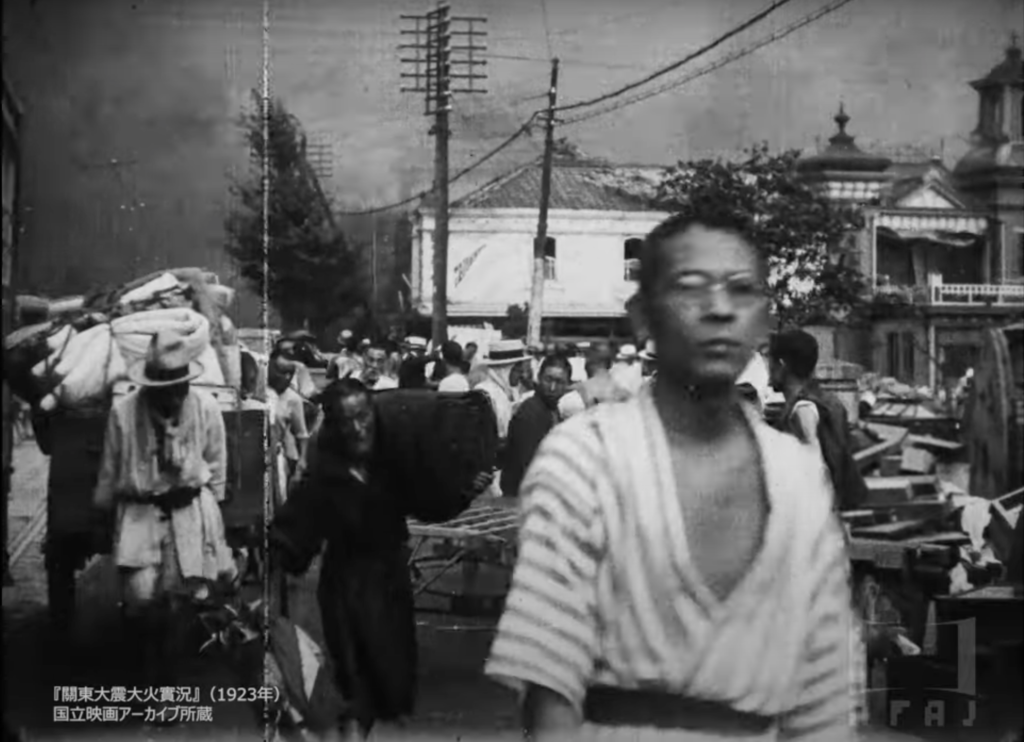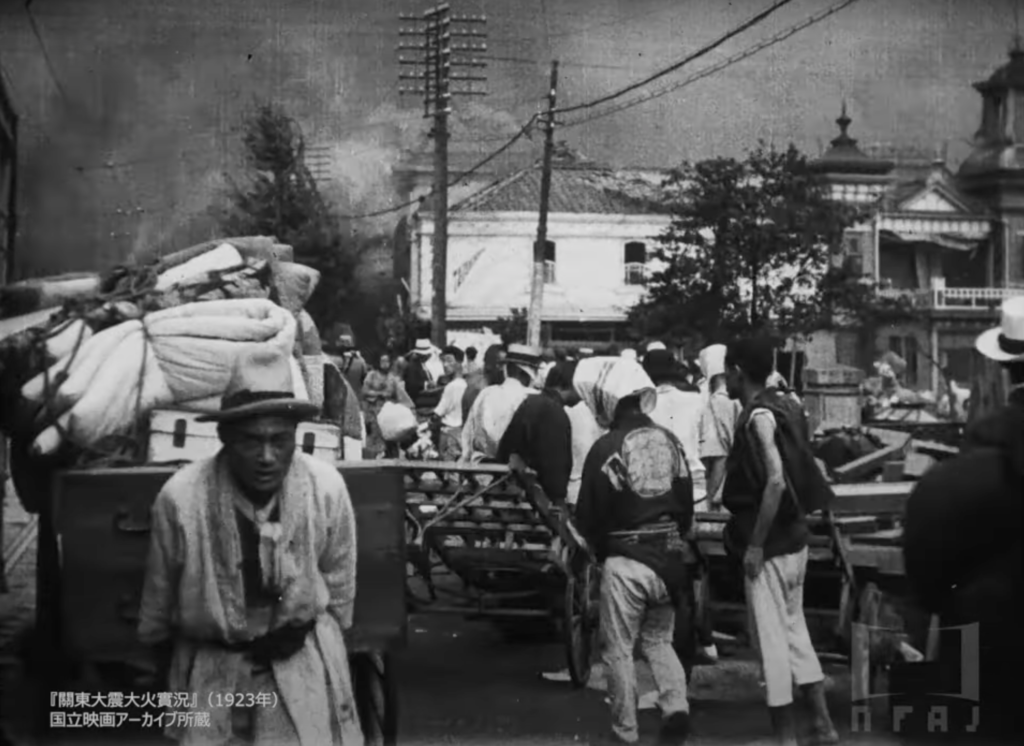Jennifer Weisenfeld’s poignant chapter in Imaging Disaster: Tokyo and the Visual Culture of Japan’s Great Earthquake of 1932 gave tons of insight on the spectacle and aesthetics of disaster in Japanese history, particularly regarding ‘divine punishment’ for a tumultuous political climate. As a fan of film history, Weisenfeld’s text prompted me to watch Kanto Taishin Taika Jikkyo, or “Actual Conditions of the Great Kanto Earthquake and Fire,” the 1923 documentary film which serves as some of the earliest evidence of the human condition’s inclination toward an aestheticized vision of disaster.


I found myself pausing to look at a specific frame around the 4-minute mark, in which the ‘fourth wall’ of the film is abruptly broken. A man, “wearing a loosely tied yukata robe, casually saunters across the frame in Kanda, staring directly at the camera as he passes by. In this nonchalance and lack of worldly possessions, he stands in marked contrast to the other figures around him, particularly the man immediately behind him who is struggling with a massive handcart full of household goods.” As a mediating figure between the fictive medium of film and the painfully accurate documentation of the Kanto earthquake’s devastation, this man draws attention to the voyeuristic (and perhaps aestheticized) nature of the testimony of tragedy.
It’s a powerful moment, and I think it opens up discussion for considering how disaster/tragedy/devastation/whatever-you-would-like-to-call-it has been documented and understood throughout Japanese history. Where else have we seen this, and how might we continue to see it in such tumultuous environmental circumstances?